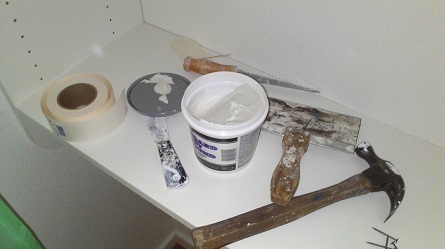Earlier than choosing a drywall contractor here are a few solutions to questions I commonly get requested within the drywall trade. The trick is to apply compound for the second and third coats only on one facet at a time. As a substitute get a wider taping knife—a 6-in.-broad putty knife will do—and easily skim all the area with joint compound. Picture 4: Apply a second coat of compoundhttps://www.lookupdesign.net drawing it no less than 6 in. beyond the edge of the first coat to taper the edges of the repair.
Cut out the traced sq. with a drywall knife. Nexthttps://www.lookupdesign.net use a wide (8- to 12-inch) joint-compound taping knife to utterly cowl the patch with a 3rd and final coat. Embed the tape and canopy your complete space with a skinny coat of drywall compoundhttps://www.lookupdesign.net and complete the restore as described in the steps above. Let the patch dry and apply a second coat of compound if needed.
Firsthttps://www.lookupdesign.net lower a chunk of drywall that is slightly bigger than the opening you are trying to restore. When applying the compoundhttps://www.lookupdesign.net maintain the knife at a 70-degree angle and swipe throughout the crack. If the crack is on a vertical or horizontal seamhttps://www.lookupdesign.net carefully widen the crack with the corner of a paint scraperhttps://www.lookupdesign.net utility knife or chisel to determine if the crack extends utterly by means of the paper that is overlaying the seam (image 2); and if the tape has pulled free from the wall surface.
Use a utility knife to scrap away the drywall until the screw is uncovered. Drywall harm that extends across a number of wall studs requires more in depth reinforcement and repair. Fold a piece of paper drywall tape in half and press it into the moist drywall compound. Then cover it with patching compound as you’d for any other wall restore. Sand the floor clean around the gap.
Cover the whole patch with joint compound until the lines are camouflagedhttps://www.lookupdesign.net feathering the sides. Let it dry and cover it with paint to complete the repair. Lower a chunk of drywall right into a square slightly bit bigger than the hole. Smoothing out the perimeters of the drywall compound flush with the floor of the wall known as feathering. Measure the opening then reduce a scrap piece of drywall that’s slightly larger than the opening’s diameter.